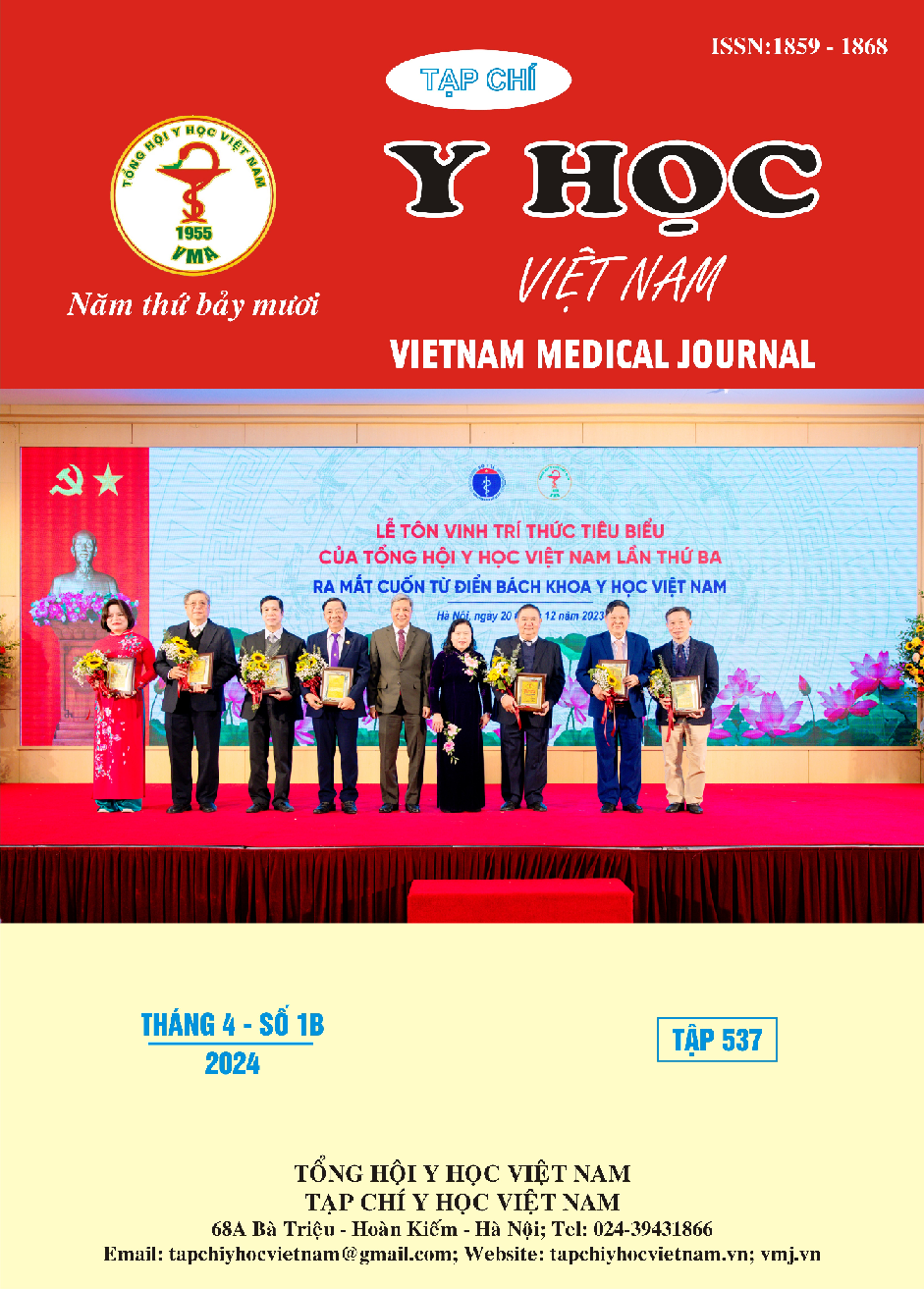SO SÁNH BIẾN CHỨNG CỦA PHẪU THUẬT TÁN SỎI THẬN QUA DA ĐƯỜNG HẦM NHỎ VÀ ĐƯỜNG HẦM TIÊU CHUẨN TRONG ĐIỀU TRỊ SỎI THẬN ĐƠN GIẢN
Nội dung chính của bài viết
Tóm tắt
Mục tiêu: So sánh biến chứng phẫu thuật lấy sỏi thận qua da đường hầm nhỏ với đường hầm tiêu chuẩn trong điều trị sỏi thận đơn giản. Bệnh nhân và phương pháp: Bệnh nhân được điều trị sỏi thận đơn giản bằng phẫu thuật lấy sỏi thận qua da, từ tháng 11 năm 2016 đến tháng 11 năm 2022. Tất cả các trường hợp được thực hiện ở tư thế nằm sấp dưới hướng dẫn của C-arm. Kích thước đường hầm 26 F đối với PCNL tiêu chuẩn và đến 16,5 F đối với miniPCNL. Sau quá trình can thiệp thì tất cả các trường hợp được mở thận ra da, trường hợp chưa sạch sỏi được đặt JJ xuôi dòng. Thiết kế nghiên cứu: đoàn hệ tiến cứu. Biến chứng của phẫu thuật được phân loại theo thang điểm Clavien-Dindo. Kết quả: Nghiên cứu bao gồm 178 bệnh nhân; 89 bệnh nhân được điều trị tán sỏi qua đường hầm tiêu chuẩn và 89 trường hợp tán sỏi thận qua da với đường hầm nhỏ. Tỷ lệ biến chứng của phương pháp miniPCNL thấp hơn đáng kể so với PCNL tiêu chuẩn (17,96% so với 24,27%, P < 0,001). Tỷ lệ truyền máu không có sự khác biệt có ý nghĩa thống kê giữa hai nhóm. Biến chứng theo phân độ Clavien-Dindo ở nhóm miniPCNL thấp hơn so với nhóm standardPCNL có ý nghĩa thống kê. Kết luận: Ưu điểm của mini-PCNL bao gồm tỷ lệ biến chứng thấp hơn và mức độ nghiêm trọng của các biến chứng ít hơn
Chi tiết bài viết
Từ khóa
Lấy sỏi thận qua da (PCNL), lấy sỏi thận qua đường hầm tiêu chuẩn (sPCNL), lấy sỏi thận qua đường hầm nhỏ (mPCNL).
Tài liệu tham khảo
2. Gambaro G, Tzelves L, Skolarikos A, Kanbay M, Ortiz A, Cozzolino M. The new guidelines of the European Association of Urology on Urolithiasis: the urology–nephrology intersection. Nephrology Dialysis Transplantation. 2022;
3. Assimos D, Krambeck A, Miller NL, et al. Surgical management of stones: American urological association/endourological society guideline, PART I. The Journal of urology. 2016;196(4):1153-1160.
4. Ganpule AP, Bhattu AS, Desai M. PCNL in the twenty-first century: role of Microperc, Miniperc, and Ultraminiperc. World journal of urology. 2015;33:235-240.
5. ElSheemy MS, Elmarakbi AA, Hytham M, Ibrahim H, Khadgi S, Al-Kandari AM. Mini vs standard percutaneous nephrolithotomy for renal stones: a comparative study. Urolithiasis. 2019;47:207-214.
6. Kukreja RA. Should mini percutaneous nephrolithotomy (MiniPNL/Miniperc) be the ideal tract for medium-sized renal calculi (15–30 mm)? World Journal of Urology. 2018;36:285-291.
7. Feng D, Hu X, Tang Y, Han P, Wei X. The efficacy and safety of miniaturized percutaneous nephrolithotomy versus standard percutaneous nephrolithotomy: A systematic review and meta-analysis of randomized controlled trials. Investigative and Clinical Urology. 2020; 61(2): 115-126.
8. Large T, Assmus MA, Valadon C, et al. A Multi-institutional Review of Single-access Percutaneous Nephrolithotomy for Complex Staghorn Stones. European Urology Focus. 2021/09/01/ 2021;7(5):1170-1175. doi:https://doi.org/10.1016/j.euf.2020.11.005
9. Güler A, Erbin A, Ucpinar B, Savun M, Sarilar O, Akbulut MF. Comparison of miniaturized percutaneous nephrolithotomy and standard percutaneous nephrolithotomy for the treatment of large kidney stones: a randomized prospective study. Urolithiasis. 2019;47:289-295.
10. Zeng G, Cai C, Duan X, et al. Mini percutaneous nephrolithotomy is a noninferior modality to standard percutaneous nephrolithotomy for the management of 20–40 mm renal calculi: a multicenter randomized controlled trial. European Urology. 2021; 79(1):114-121.


